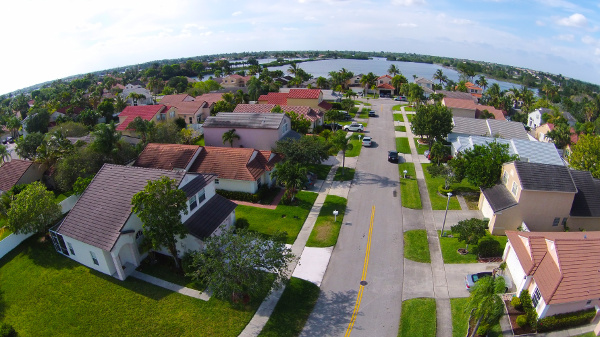Case-Shiller Home Price Indices: Home Price Growth Slows in July
 The S&P Case-Shiller Home Price Indices for July showed a sharp slowing in home price growth from June to July. National home price growth slowed from June’s reading of 18.7 percent year-over-year growth to 16.10 percent home price growth in July. This reading translated to an 0.20 percent loss in month-to-month home price growth.
The S&P Case-Shiller Home Price Indices for July showed a sharp slowing in home price growth from June to July. National home price growth slowed from June’s reading of 18.7 percent year-over-year growth to 16.10 percent home price growth in July. This reading translated to an 0.20 percent loss in month-to-month home price growth.
The S&P Case-Shiller 20-City Home Price Index fell 0.40 percent in July after increasing by 0.40 percent in June. This was the first time since March 2012 that the 20-City Home Price Index posted a decreasing pace of home price growth; all 20 cities posted slower year-over-year home price growth in July than in June.
Seven cities in the 20-City Index posted higher home price gains in July as compared to June. Demand for homes exceeds supply in many areas; limited availability of homes, rising mortgage rate, and high home prices have discouraged would-be home buyers. Analysts said that home prices fell due to rising mortgage rates impacting affordability. Craig J. Lazzara, managing director for S&P Dow Jones Indices, said that the slowing pace of home price growth in July was the “largest deceleration in the history of the Index.”
Cities that previously enjoyed rapidly rising home prices experienced a marked slowing in home price growth. Home price growth fell by 3.50 percent in San Francisco, California, and Seattle, Washington reported a 3.10 percent decline in home price growth. Home price growth in San Diego, California decreased by 2.50 percent in July. Cities posting gains in home prices included Miami, Florida with month-to-month home price growth of 1.30 percent; Home prices in Cleveland, Ohio rose by one percent, and Home prices in Chicago, Illinois rose by 0.70 percent.
FHFA Reports Home Price Growth in All Regions
The Federal Housing Finance Agency, which oversees government-sponsored mortgage lenders Fannie Mae and Freddie Mac, reported that year-over-year home prices rose for all nine census divisions and ranged from 10 percent growth in the Pacific region to 18.90 percent growth in the South Atlantic region. FHFA data is based on home sales connected with purchase money mortgages owned or guaranteed by Fannie Mae and Freddie Mac.
 Last week’s economic reporting included readings on housing markets, building permits issued, housing starts, and sales of previously-owned homes. The Federal Reserve released its scheduled monetary policy statement and gave a press conference with Fed Chair Jerome Powell. Weekly readings on mortgage rates and jobless claims were also published.
Last week’s economic reporting included readings on housing markets, building permits issued, housing starts, and sales of previously-owned homes. The Federal Reserve released its scheduled monetary policy statement and gave a press conference with Fed Chair Jerome Powell. Weekly readings on mortgage rates and jobless claims were also published. Last week’s economic reporting included readings on inflation, retail sales, and consumer sentiment. Weekly readings on mortgage rates and jobless claims were also released.
Last week’s economic reporting included readings on inflation, retail sales, and consumer sentiment. Weekly readings on mortgage rates and jobless claims were also released.